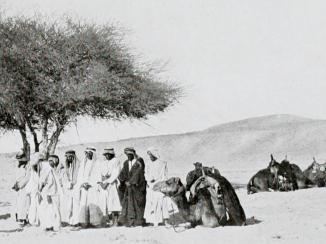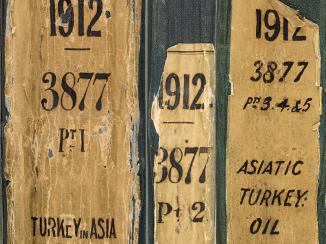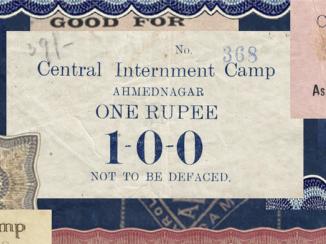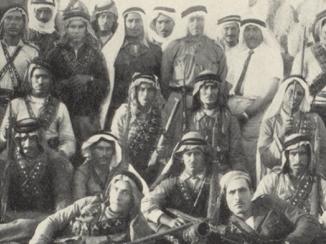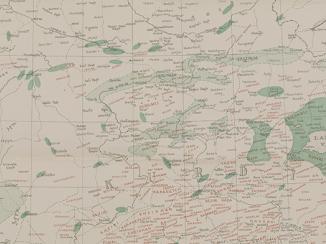'Quetta-Seistan Railway'
IOR/L/PS/18/C152
12 items in this record
Search within this record
The record is made up of 1 file (6 folios). It was created in 26 Jul 1916-4 Aug 1916. It was written in English. The original is part of the British Library: India Office The department of the British Government to which the Government of India reported between 1858 and 1947. The successor to the Court of Directors. Records and Private Papers Documents collected in a private capacity. .
About this record
- Content
This file consists of a report by the Secretary of State for India [Joseph Austen Chamberlain], which is addressed to the Prime Minister [Herbert Henry Asquith]. The report concerns a proposal, made by the Commander-in-Chief in India [Sir Beauchamp Duff], to extend the Quetta–Nushki railway to Seistan, on the grounds that it is a 'cogent military necessity'.
The report includes extracts from a telegram and a minute from the former Viceroy and Governor-General of India in Council, Lord Curzon, dated 4 September 1899 and 28 October 1901, which summarise the history of the proposed scheme and the various political, strategic and commercial arguments and counter-arguments relating to it.
This summary is followed by two telegrams from the current Viceroy [Frederic John Napier Thesiger], dated 26 July and 29 July 1916 respectively. The first of these summarises the current military case for an extension to the line (which was put forward by the Commander-in-Chief in India) as follows: any continuation of the recent Turkish advance into Western Persia may result in the Government of India having to increase its military presence in Eastern Persia, which would require improved communications between Nushki and Seistan; it is further argued that a broad-gauge railway – running from Nushki to at least as far Dalbandin – although more expensive than mechanical transport, would be a preferred solution to the current reliance on camel transport.
The first telegram provides the Government of India's response to these proposals. It argues that the scheme can only be justified on 'cogent military grounds', before adding that the limitation of the extension to Dalbandin would be a half measure which would not provide adequate relief to the current situation, nor aid wider strategic contingencies.
The second telegram details the Railway Board's rough estimate of the cost of extending the line (2,000,000 l ).
Also included in the report are the following three minutes:
- a minute from the India Office The department of the British Government to which the Government of India reported between 1858 and 1947. The successor to the Court of Directors. 's Political Department, dated 27 July 1916, which refrains from expressing an opinion on the strategic implications of extending the line, but concludes that the commercial prospects would be sufficient to warrant constructing a line. The minute opines that an extension as far as Dalbandin would be the more practical of Duff's two proposals;
- a minute, dated 28 July 1916, in which the Military Secretary to the India Office The department of the British Government to which the Government of India reported between 1858 and 1947. The successor to the Court of Directors. , General Sir Edmund Barrow GCB, makes the argument that the entire line would take one and a half years to build, and that therefore it is not likely to be of use during the present war. Barrow supports the Commander-in-Chief's suggestion of extending the line as far as Dalbandin, in the hope that it may be of some use in the war effort (the implication being that motor and camel transport could be relied upon from Dalbandin to Seistan);
- a minute from the Permanent Under-Secretary of State for India, Sir Thomas William Holderness, dated 29 July 1916. The minute argues that a decision on whether to extend the line should be made based on the actual or possible necessities of the present war, and that future political, commercial or strategic requirements should not come into consideration.
The Secretary of State for India begins the report with an extract from a private telegram, dated 25 July 1916, from the Viceroy to the Secretary of State for India, in which the Viceroy suggests that the matter requires the advice of the Chief of Imperial General Staff (Sir William Robert Robertson).
The Secretary of State for India informs the Prime Minister that an immediate decision is required on the following:
- whether an extension of the line is a 'cogent military necessity', which should be undertaken at once;
- whether the extension can be carried out in time to be of use for the purposes stated by the Commander-in-Chief;
- whether an extension to Dalbandin would be sufficient.
- Extent and format
- 1 file (6 folios)
- Arrangement
The papers are arranged in approximate chronological order from the front to the rear of the file.
- Physical characteristics
Foliation: the foliation sequence for this description commences at f 8, and terminates at f 13, as it is part of a larger physical volume; these numbers are written in pencil, are circled, and are located in the top right corner of the recto The front of a sheet of paper or leaf, often abbreviated to 'r'. side of each folio. A previous foliation sequence, which is also circled, has been superseded and therefore crossed out.
- Written in
- English in Latin script
- Type
- Archival file
Archive information for this record
- Original held at
- British Library: India Office The department of the British Government to which the Government of India reported between 1858 and 1947. The successor to the Court of Directors. Records and Private Papers Documents collected in a private capacity.
- Access conditions
Unrestricted
- Archive reference
- IOR/L/PS/18/C152
- Date(s)
- 26 Jul 1916-4 Aug 1916 (CE, Gregorian)
Access & Reference
History of this record
Related search terms
- Subjects
- Railway linesRailway constructionFirst World War (1914-1918)Military strategy
- Places
- SeistanDalbandinNushkiQuetta
- People & organisations
- Secretary of State for India, United KingdomViceroy and Governor-General of India in CouncilGovernment of IndiaCommander-in-Chief, IndiaChief of the General StaffPrime MinisterIndia Office, Political and Secret DepartmentPermanent Under-Secretary of State for IndiaIndia Office, Military Secretary
Use and share this record
- Share this record
- Cite this record in your research
'Quetta-Seistan Railway', British Library: India Office Records and Private Papers, IOR/L/PS/18/C152, in Qatar Digital Library <https://www.qdl.qa/archive/81055/vdc_100000000833.0x00014e> [accessed 20 November 2024]
- Link to this record
https://www.qdl.qa/en/archive/81055/vdc_100000000833.0x00014e
- IIIF details
This record has a IIIF manifest available as follows. If you have a compatible viewer you can drag the icon to load it.https://www.qdl.qa/en/iiif/81055/vdc_100000000833.0x00014e/manifestOpen in Universal viewerOpen in Mirador viewerMore options for embedding images
Copyright: How to use this content
- Reference
- IOR/L/PS/18/C152
- Title
- 'Quetta-Seistan Railway'
- Pages
- 8r:13v
- Author
- East India Company, the Board of Control, the India Office, or other British Government Department
- Usage terms
- Open Government Licence













